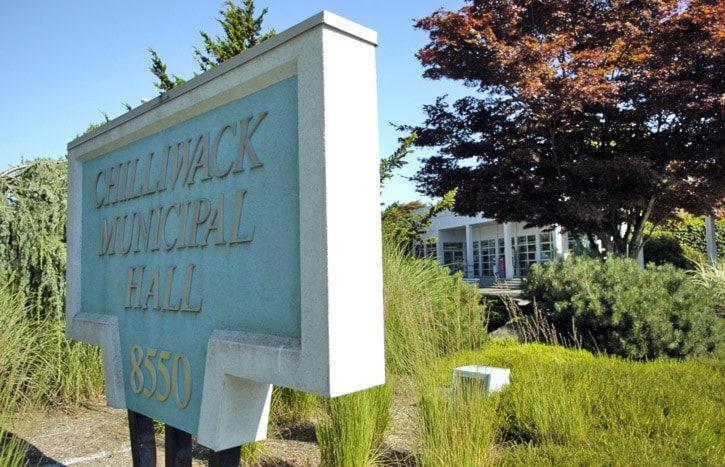City of Chilliwack is not allowing mercury to be dumped into the Fraser River.
That’s just one tidbit of misinformation swirling about the proposed Aevitas waste recycling plant.
Chilliwack officials are now actively trying to clear up other misconceptions with clarifications about the rezoning, and the approval of the controversial location by the river.
A lawsuit — claiming the city failed to properly notify the public about the hazardous materials prior to the rezoning hearing — was filed this spring by Chilliwack resident Glen Thompson and the B.C. Outdoor Recreation Council.
City officials have declined to comment on the substance of the lawsuit until it is heard in court.
“Of course, we look forward to the day when the BC Supreme Court hears the petition and deals with the matter on the merits of the case and not on misinformation,” reads a tersely worded joint statement from Chilliwack council at chilliwack.com/aevitas.
“First of all, we would like you to know that all of us on City Council take our responsibilities very seriously and that we care deeply about our rivers and environment.”
When it is built, the Aevitas facility will safely and effectively take mercury from CFL bulbs out of the environment — not allow it to be spilled or dumped into the river.
Not everyone is convinced.
Chilliwack resident Sabrina Gidon spearheaded an online petition at change.org asking council to “change its decision” to allow Aevitas to build the plant by the river.
The petition has “exceeded” all her expectations, attracting more than 16,700 signatures at press time since it was launched on June 2.
Gidon told The Progress she never launched a battle like this before but felt compelled to act.
“I started the petition after doing a bit of research on my own,” she said. “In my opinion, things weren’t done correctly with the rezoning notice. I just felt there was something wrong there.”
The rezoning to allow the Aevitas plant to be built in the Cattermole lands on Cannor Road was a unanimous decision by council.
But instead of revealing that the site was going to be used for the treatment of hazardous waste, the city’s hearing notice stated it was going “to facilitate the construction of a waste recycling and transfer facility.”
“For all you could tell by that description,” Gidon argues in the petition explanation, “the plant was going to handle garden waste and old bottles – not mercury and toxic sludge.
“And the location map failed to show one important element – namely that the Fraser River is just 150 metres away.”
That is one of Gidon’s primary concerns, as well as those pursuing the court case against it.
“Building a facility like this so close to something as precious as the river, there is no way you can guarantee against any spills or toxic sludge or mercury getting into it,” she said. “I couldn’t sit idly by and allow it.”
Gidon admitted she didn’t envision anyone dumping mercury into the waterway on purpose.
“That might be a little extreme, but I understand why people are concerned. It’s nothing short of willful negligence to place a facility like this so close to a main waterway.”
But this is precisely the type of misinformation City of Chilliwack has been trying to counter for months.
It’s a twist on the facts that opponents keep hammering home, and lacks acknowledgement of all the protective safeguards that would prevent any toxic materials from entering the water in the first place, from multi-barrier spill protection to flood-proof construction techniques, the city says.
The Aevitas facility is now delayed because of the lawsuit, and still awaiting a technical review by the B.C. Ministry of Environment.
It is an environmentally responsible project, not an abdication of that responsibility, to provide a location for the entire region, including Fraser Valley and Metro Vancouver, to recycle these otherwise hazardous materials, they continued.
“Not that long ago, we learned the importance of keeping prescription drugs and batteries out of the garbage,” according to the city statement. “We also know that CFL bulbs must be recycled and we’re proud to be taking the right steps to help make recycling more viable.”
The company should be recognized for its core orientation to protect the environment.
“Early on we had to establish that Aevitas shares our commitment to the environment and provides environmentally responsible disposal solutions for many items we use on a daily basis,” the city’s release states.
CFL bulbs contain a small amount of mercury and can’t just be tossed in the garbage.
“Fortunately, Aevitas gives us an environmentally friendly option for disposal of these materials.”
The idea is to safely remove the mercury after the glass has been broken under negative pressure.
Over and over the critics have stated they aren’t opposed to the work Aevitas does, but rather to the location of the proposed facility — within sight of the river at a distance of about 150 metres.
“This is a very serious point that we took under careful consideration,” stressed city officials.
Fact is almost no spot in Chilliwack is completely insulated from the river.
Most of the city’s catchbasin covers have little yellow fish painted on or beside them — a constant visual reminder that the entire city is “directly connected” to the river.
Due to some of the existing misinformation being circulated online, people may be led to believe that Chilliwack is ok with dumping mercury or other toxic materials into the Fraser River.
“Nothing could be further from the truth” reads the city’s newly updated fact sheet. “In reality, we’re helping take mercury out of the waste stream through increased recycling opportunities.”
The updated fact sheet is at: chilliwack.com/aevitas
jfeinberg@theprogress.com
Twitter.com/chwkjourno
